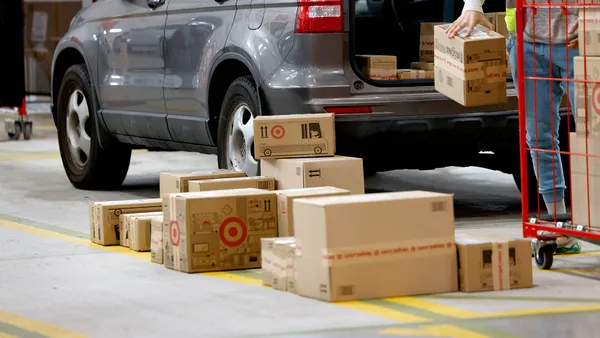Dive Brief:
- Amazon's delivery stations, the facilities closest to the consumer, are growing the most as the e-tailer expands its logistics footprint, according to a research note published last week from RBC Capital Markets based on data from the supply chain consultancy MWPVL and Amazon's financials. Amazon delivery stations are growing in number and getting larger, the researchers noted, pointing out this helps Amazon get inventory "dramatically closer to the consumer."
- Amazon announced its plan in July to increase the square footage of its distribution operation by 50% by the end of 2020. This will result in the company adding three times the amount of capacity it added in 2019 and is more than what the company added over the last three years combined, according to RBC.
- "In 2019, Amazon had partnered with 800 companies with 75,000 drivers who picked up items across Amazon’s then 150 Delivery Stations," RBC wrote of the growth. "Now, Amazon partners with 1,300 companies that employ 85,000 workers, across what we think are currently approximately 400 Delivery Stations in the U.S."
Dive Insight:
Amazon's effort to get inventory closer to consumers is not exactly new to Amazon, nor as a general supply chain management strategy. Experts have long known that increasing the number of facilities will decrease transportation costs while increasing inventory and facility cost.
But the scale at which Amazon is building out its network is arguably unparalleled in the U.S. market, at least compared to other retailers. RBC found that Amazon has grown its logistics network over the last three years the same amount that Walmart has grown its network over the last 50 years.
Amazon's current global network, according to RBC, consists of:
- 440 fulfillment centers.
- 70 sortation centers.
- 685 delivery stations.
- 9 air hubs.
RBC sees four main advantages of Amazon's investment in its logistics network:
- Speed of delivery to customers.
- Potential to reduce last-mile delivery cost.
- Ability to reduce reliance on 3PLs.
- Potential to sell capacity in its shipping network in the future as a new business opportunity.
Amazon has already added capacity to handle increased volume during the pandemic.
"We were able to meet this heightened demand because we were also able to open up more fulfillment network capacity as the quarter progressed with faster delivery across more selection," Amazon CFO Brian Olsavsky told analysts in July.
Olsavsky said the company is prioritizing capacity building before turning its attention to reaching pre-pandemic delivery speeds. But the emphasis on delivery stations suggests a focus on speed remains, even as it builds out its operations.
The network growth will be especially important as the company prepares for a fourth quarter with Prime Day and its first holiday season during a pandemic, RBC said.
The expansion will also allow the company to offer same- and next-day delivery to 65% to 70% of U.S. homes over the next two years, according to RBC, which cited MWPVL. It will also be able to extend to cutoff time for same-day delivery.















